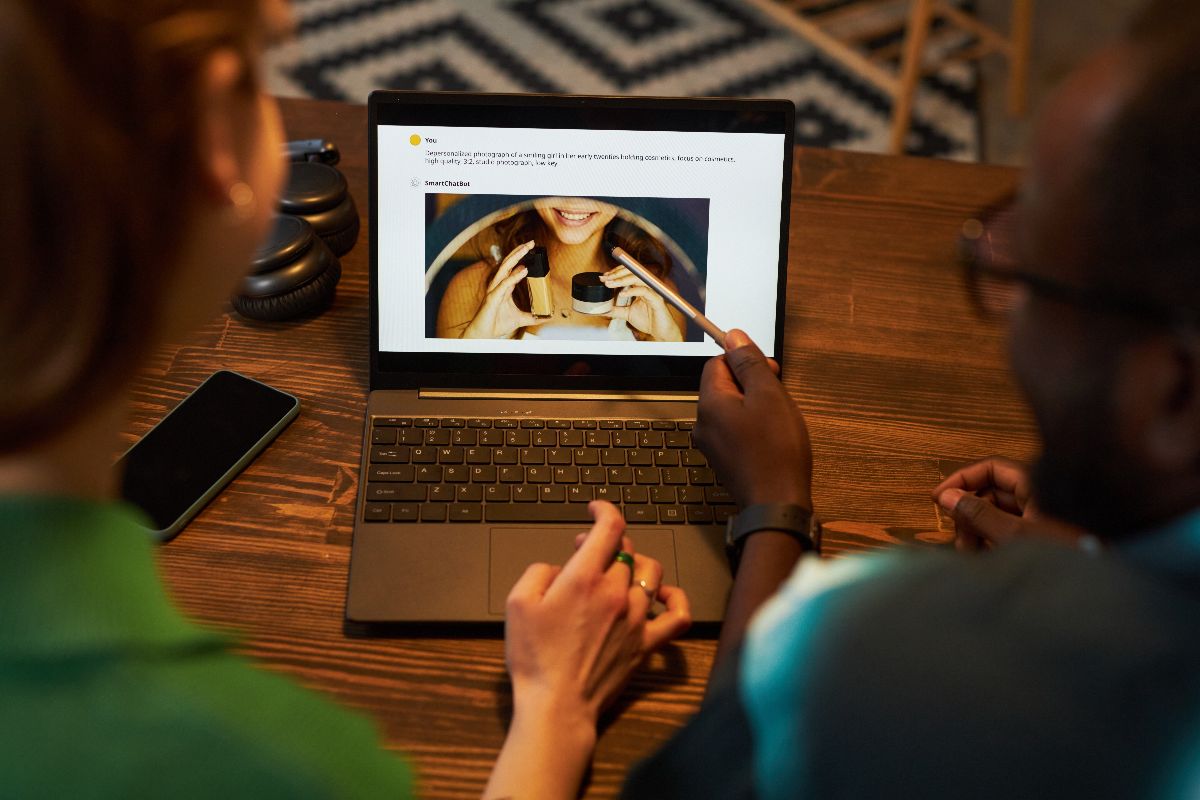Overview
Table of Contents Hide
- This comprehensive guide breaks down what is on-page SEO, explaining the key elements, best practices, and actionable strategies to optimize your website for both search engines and users.
- From title tags and meta descriptions to content quality, internal linking, and schema markup, learn how to boost rankings, enhance user experience, and measure SEO success effectively.
Your website might look great, but search engines don’t see it the way people do. If they can’t understand your site, it won’t be properly indexed—meaning potential customers could miss out on finding you. On-Page SEO ensures your website isn’t just visually appealing, but also structured in a way that search engines can easily crawl, index, and understand your content.
When people ask “what is on-page SEO?”, the answer lies in optimizing the very elements of your website that you control. This includes titles, headings, content, internal links, and even images, all working together to improve your visibility online. Without it, even the most beautifully designed site can remain invisible to your audience. Strong on-page SEO gives your business the competitive edge it needs to rank higher and attract the right visitors.
That’s why it’s one of the essentials included in SEO packages like ours at SEO Hacker. On-page SEO lays the groundwork for getting your website to the top of search results.
What is On-Page SEO?
On-page SEO is the practice of optimizing the elements you control directly on your website to improve search engine visibility and user experience. It covers everything from your content, titles, and headings to URL structures, images, and internal links, all the details that help search engines understand your pages more clearly.
When done right, on-page SEO also makes your content more engaging and accessible to readers. Think of it as laying down a strong foundation: without it, even the best off-page strategies won’t deliver their full potential.
Key Elements of On-Page SEO

On-page SEO is the set of signals and elements you control directly on each page to tell search engines what the page is about and to make that page useful for real people. Nail these elements one by one and you’ll not only improve your chances of ranking, you’ll also give visitors a clearer, faster, and more trustworthy experience that converts.
Title Tags
Title tags are the HTML <title> elements that appear as clickable headlines in search results and as browser tab labels. In on-page SEO, they serve two main purposes: signal the page’s core topic to search engines and attract users to click.
A well-crafted title clearly communicates the page’s value, aligns with search intent, and gives both users and search engines an immediate understanding of what the page is about.
Meta Descriptions
These short HTML snippets summarize a page’s content for searchers, serving as a persuasive preview rather than a direct ranking factor. Meta descriptions help improve click-through rates by quickly showing users the page’s value, highlighting benefits, relevance, and what sets it apart, essentially acting as mini ad copy for your organic listings.
Headings
Headings are the labels (H1, H2, H3, etc.) that organize your content, making it easier for both readers and search engines to understand the flow of information. Each level of heading has its own role:
- H1 – Main Topic: The single, primary headline that introduces the core subject of the page.
- H2 – Key Sections: Subheadings that divide the content into major themes or categories under the H1.
- H3 – Supporting Points: Subsections that provide more detail or examples under each H2, keeping information well-structured and digestible.
URL Structure
URL structure refers to how your page addresses are organized and displayed on your website. A well-structured URL acts like a “second headline,” giving both users and search engines a quick understanding of a page’s topic. In on-page SEO, it also defines the location of a page within your site hierarchy. Clear, concise URLs improve crawl efficiency, make content easier to share, and help users remember and navigate your site more effectively.
Content Optimization
Content optimization is the process of creating and refining content so it’s both search engine–friendly and valuable to readers. At the heart of on-page SEO, it ensures your pages meet user intent while signaling relevance and depth to search engines. Optimized content answers questions thoroughly, demonstrates expertise, and builds trust with your audience.
When content is clear, comprehensive, and well-structured, it not only engages users but also increases the chances of earning links. Pages that balance keyword usage with genuine value consistently outperform those focused solely on keywords.
Internal Linking
Internal linking is the practice of connecting pages within your website through hyperlinks. In on-page SEO, it clarifies your site’s structure, reinforces content hierarchy, and improves the discoverability of deeper or priority pages.
Effective internal linking strengthens topic clusters, signals importance to search engines, and ensures crawlers can navigate your site more efficiently. For users, it enhances the browsing experience by surfacing related and relevant resources, keeping them engaged longer and guiding them toward key conversion pages.
Image Optimization
Image optimization is the process of making visuals fast-loading, accessible, and search-friendly. In on-page SEO, it ensures that images contribute to performance rather than slowing down a page, while also providing valuable signals to search engines. Optimized images enhance user experience, improve accessibility, and can even attract additional traffic through image search, all while supporting overall SEO goals.
Mobile-Friendliness & UX
Mobile-friendliness and user experience (UX) refer to how well your site adapts to different devices and how intuitive it is to use. In on-page SEO, this ensures that both users and search engines can easily navigate and engage with your pages. A responsive, fast, and user-friendly site reduces bounce rates, increases time on page, and signals quality to search engines, directly improving both rankings and user satisfaction.
Schema Markup
Schema markup, or structured data, is code added to your site that helps search engines understand the meaning and context of your content. In on-page SEO, it provides explicit clues about whether your page represents a product, article, event, or another entity. By making this context clear, schema markup increases your chances of appearing in rich results, improves click-through rates, and gives AI-driven tools a precise understanding of your content—all without changing the user-facing design.
Why On-Page SEO Matters

On-page SEO is the way clear communication is established between a website, search engines, and users. When elements within your control are optimized, crawlers are better able to interpret your pages, and greater value is provided to real users who engage with them. Through this process, stronger relevance signals are sent, click-through rates are increased, user interaction is improved, and conversions are ultimately driven.
Experience, Expertise, Authoritativeness, and Trustworthiness (E-E-A-T) are also reinforced when author credentials, credible sources, and structured data are made visible to Google and AI-powered platforms. At the same time, rankings are protected through well-optimized Core Web Vitals and mobile-first design.
Unlike off-page tactics, which can be slow or unpredictable, on-page SEO is considered high-impact and fully within your control. With small, consistent improvements, links can be earned, rich results and knowledge panels can be triggered, and measurable business outcomes can be achieved.
How To Do On-Page SEO
On-page SEO is all about refining the elements on your website so both search engines and users understand, navigate, and engage with your content better. By focusing on these actionable steps, you can improve rankings, boost visibility, and create a seamless experience that turns visitors into loyal readers or customers.
Optimize Your Title Tags and Meta Descriptions
Craft title tags that clearly state your page topic, include your primary keyword, and stay within 50–60 characters to avoid truncation. Write meta descriptions that summarize the page’s benefit, naturally include the keyword, and encourage clicks. Both should be unique, relevant, and aligned with user intent to maximize CTR and search relevance.
Use Proper Headings and Content Structure
Organize content with H1 for the main topic and H2/H3 for subtopics, creating a logical hierarchy. Incorporate keywords naturally into headings while keeping them descriptive and scannable. Well-structured content helps users digest information quickly, improves accessibility, and signals search engines about the relevance of each section.
Improve URL Structure
Create short, readable URLs that include the main keyword and reflect the site’s hierarchy. Avoid unnecessary parameters, numbers, or long strings. Want more clicks and easier crawling? Clean, concise URLs deliver exactly that, while also helping users predict the content of the page before clicking, improving both SEO and usability.
Enhance Content Quality and Keyword Usage
Write original, in-depth content that fully addresses user intent, balancing primary and related keywords naturally. Break text into readable sections with headings, support claims with credible sources, and update regularly. High-quality, well-optimized content signals expertise and relevance, increasing rankings, engagement, and user trust.
Optimize Images and Internal Links
Use descriptive, keyword-rich alt text for images and compress them for faster loading. Link contextually to relevant internal pages using clear anchor text. This improves page speed, accessibility, and crawlability while guiding users to additional content, enhancing site structure, engagement, and overall SEO performance.
How to Measure On-Page SEO Success
Measuring on-page SEO success starts with tracking both search engine performance and user engagement. Key metrics include organic rankings for target keywords, click-through rates from search results, and impressions in Google Search Console.
Monitor page-level engagement through bounce rate, average session duration, and pages per session to see if visitors find content useful. Technical indicators like page speed, mobile-friendliness, and Core Web Vitals also affect rankings and user experience.
You can also validate structured data with Google’s Rich Results Test to ensure eligibility for enhanced SERP features. Consistently analyzing these metrics helps you identify what works, refine strategies, and maximize SEO ROI.
Key Takeaway
Understanding what on-page SEO is crucial for anyone serious about improving their website’s search visibility and user engagement. By focusing on essentials like titles, content, links, and schema markup, you provide search engines with clear signals while enhancing the experience for your visitors. Consistently implementing these strategies can help your pages rank higher, attract more relevant traffic, and build credibility with your audience.
Ready to boost your website’s performance and drive more targeted traffic? SEO Hacker offers expert on-page SEO services designed to improve rankings, increase click-through rates, and enhance user experience. Don’t let under-optimized pages hold your business back.
Partner with SEO Hacker today and turn your website into a growth engine.








